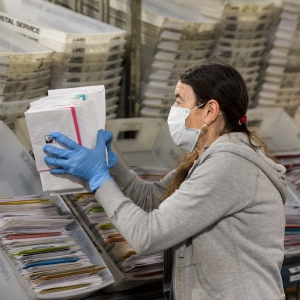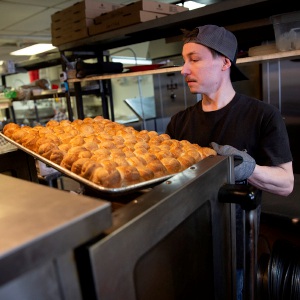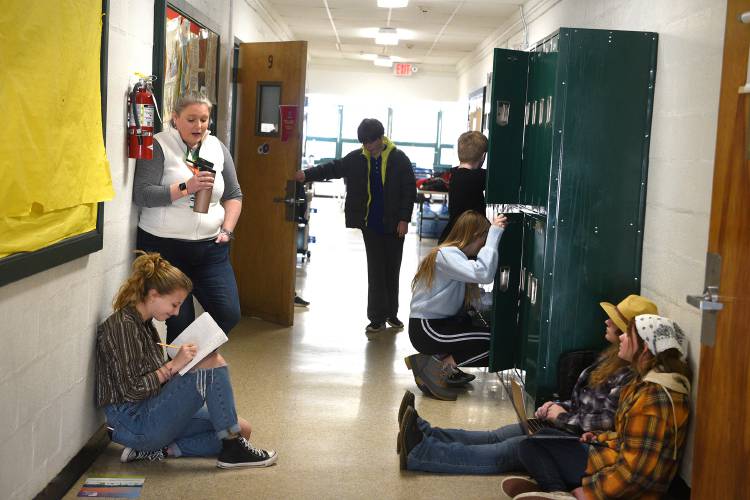Cornish Elementary gets money to dig new well after years of PFAS tests and gallon jugs
| Published: 10-18-2023 10:45 PM |
CORNISH — Students at Cornish Elementary School are still drinking imported water from gallon jugs, two years after high levels of so-called “forever chemicals” were discovered in the school’s well, shutting off the taps.
That’s even after the federal government, in March, proposed the first nationwide regulations for the harmful contaminant known as PFAS.
Several studies link PFAS — an umbrella acronym for thousands of chemicals related to perfluoroalkyl and polyfluoroalkyl substances — to serious health effects, including cancer, liver damage and childhood developmental issues. The chemicals can be found in a wide range of manufactured products, from dental floss to firefighting foam.
After years of waiting for federal funding to trickle down the grant pipeline, earlier this month the Executive Council approved $200,000 in American Rescue Plan Act, or ARPA, money to install a new well, deeper than the existing one, at Cornish Elementary. The school is hoping to get a new water source online by February, said Sydney Leggett, superintendent of the Plainfield and Cornish school districts.
Meanwhile, attendees and staff at the 120-student school don’t drink or cook with water that runs directly from the current shallow, gravel-packed well, from which the school continues to detect high levels of PFAS, Leggett said. A system filters out PFAS from a single faucet in the cafeteria for food preparation, but otherwise, drinking fountains remained shuttered.
PFAS don’t naturally break down, and are in virtually every landfill, environmental scientists say. Measured in parts per trillion, or ppt, the chemicals are potentially dangerous even at undetectable levels.
In 2021, the well at Cornish Elementary showed a type of PFAS at 24.8 ppt in a quarterly test, more than double the state’s 12 ppt maximum contaminant level. The school learned about the contamination the following summer after June tests showed PFAS levels at over 20 ppt.
Beginning when students returned to school that fall, the school spent just under $15,000 to haul in bottled water within the first seven months without a drinking source. More recent costs weren’t immediately available.
Article continues after...
Yesterday's Most Read Articles
 Dartmouth administration faces fierce criticism over protest arrests
Dartmouth administration faces fierce criticism over protest arrests
 West Lebanon crash
West Lebanon crash
 Plan on track to ship Upper Valley mail to Connecticut for sorting
Plan on track to ship Upper Valley mail to Connecticut for sorting
 Lebanon’s Jewell back from auto accident, more aware of ‘drowsy driving’ dangers
Lebanon’s Jewell back from auto accident, more aware of ‘drowsy driving’ dangers
 Longtime employees buy West Lebanon pizzeria
Longtime employees buy West Lebanon pizzeria
(The testing company only alerted the school in June because it wasn’t in legal violation until levels were above the maximum threshold for three quarters).
In 2020, New Hampshire became the first state in the country to require local water systems, landfills and wastewater plants to routinely test for the chemicals, which have since turned up in every county in the state.
Contrary to its “Live Free or Die” ethos, the state’s maximum contaminant levels are also some of the strictest. In New Hampshire, PFOA — a kind of PFAS most commonly found in firefighting foam — is capped at 12 ppt in the state, while Vermont caps it at 20 ppt.
The year before, in a historic series of lawsuits, New Hampshire sued eight companies, including chemical manufacturers 3M and DuPont, for continuing to produce and sell products containing PFAS despite knowing about their harm.
Federal restrictions have been slower to materialize. Last March, the federal Environmental Protection Agency proposed near-zero regulations for four types of PFAS. The regulations aren’t in effect yet.
As Cornish Elementary waits for the fix, Leggett said the gallon jugs have become the new normal. “We just continue to stay on top of it,” she said. “Everyone’s adapted to it really well.”
The school continues to search for a direct source of the PFAS. But “it’s not always possible” to locate a culprit for ubiquitous chemicals, and so far there are no significant leads, Leggett said.
Frances Mize is a Report for America corps member. She can be reached at fmize@vnews.com or 603-727-3242.



 Over Easy: On bread, buttered popcorn and big sandwiches
Over Easy: On bread, buttered popcorn and big sandwiches
